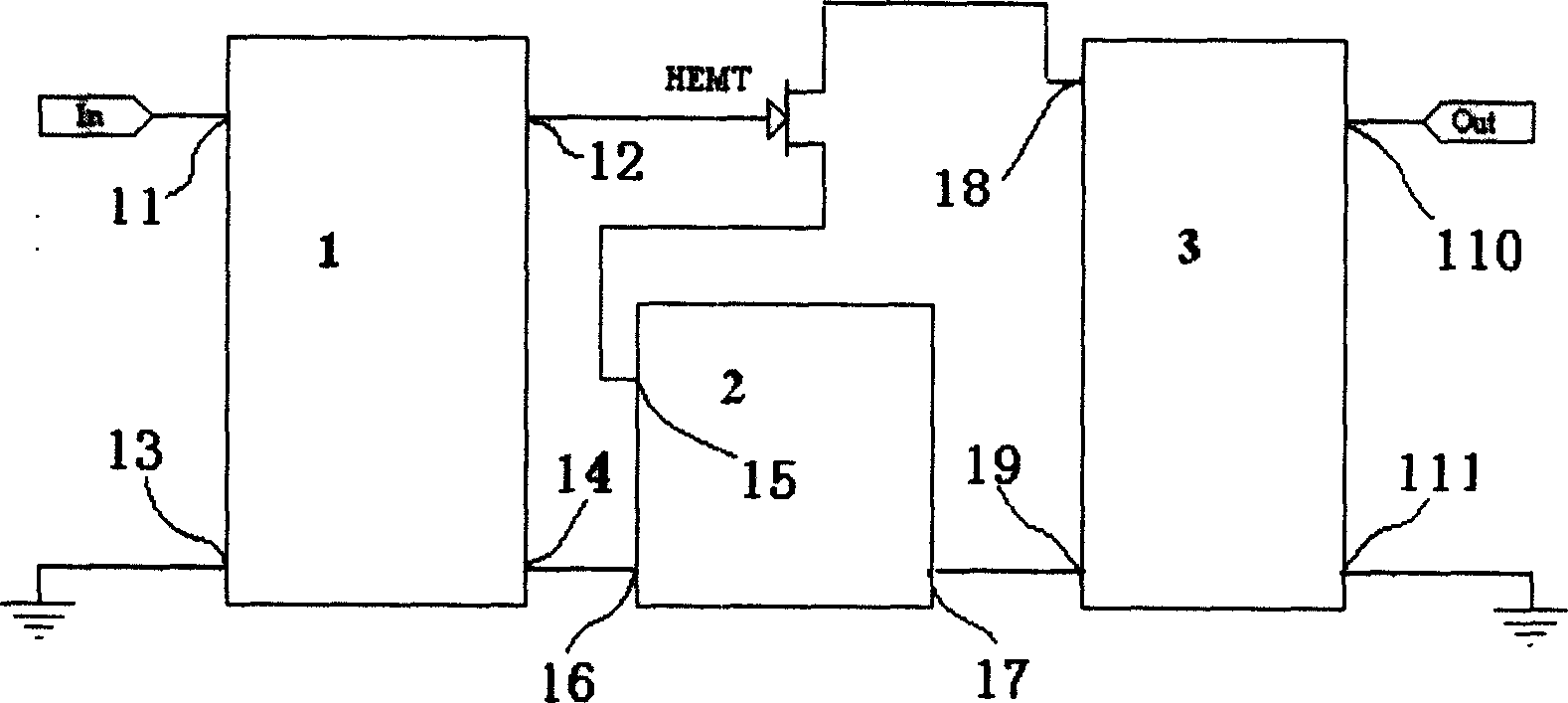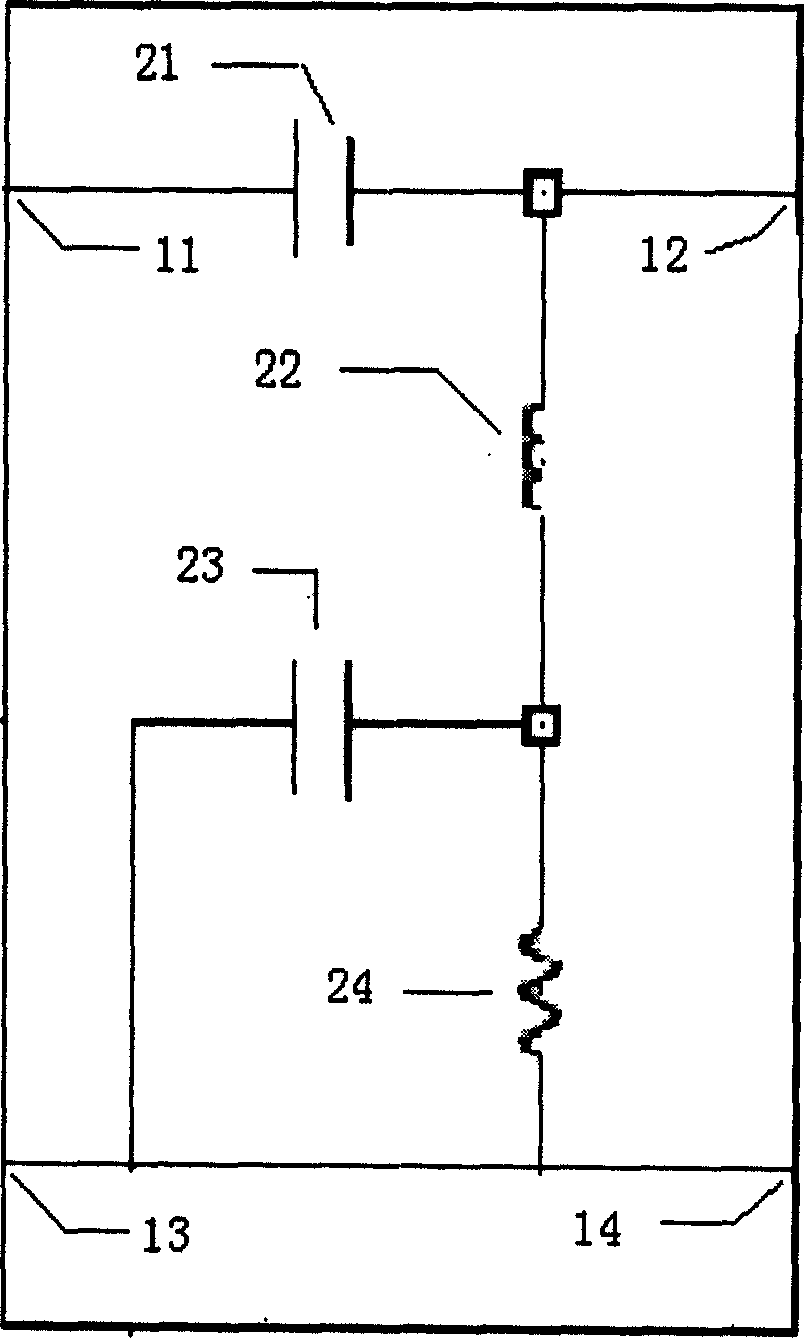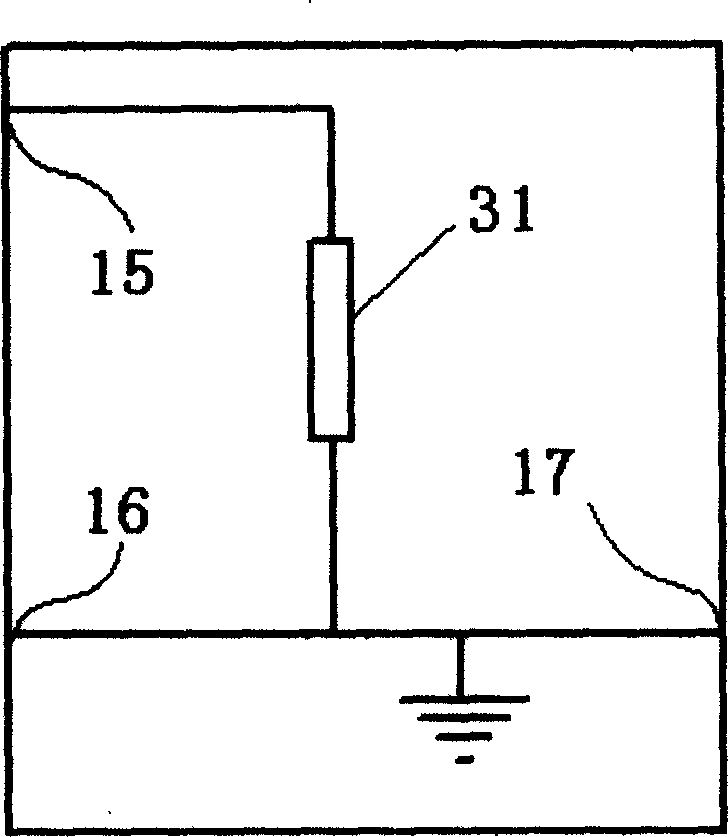Radio frequency band low temperature low noise amplifier
A low-noise amplifier and amplifier technology, applied to high-frequency amplifiers, improved amplifiers to reduce noise effects, etc., can solve the problems of amplifiers deviating from the operating point and not working normally, achieve small standing wave ratio, high sensitivity, and reduce overall noise Effect
- Summary
- Abstract
- Description
- Claims
- Application Information
AI Technical Summary
Problems solved by technology
Method used
Image
Examples
Embodiment Construction
[0009] The invention is a radio frequency low-temperature low-noise amplifier for realizing ultra-high sensitivity of the front-end system of a high-temperature superconducting receiver, and achieving extremely low noise coefficient and low input voltage standing wave ratio in a superconducting environment. figure 1 The schematic diagram of the RF low-temperature low-noise amplifier is shown, and its amplifying circuit is divided into input matching network 1, output matching network 3, and negative feedback network 2 according to the different pins connected to the transistor. Among them, points 13, 14, 16, 17, 19, and 111 represent the grounding points of the circuit; points 11, 12, 15, 18, and 110 represent the signal points connected to each network.
[0010] This amplifier uses a microstrip line grounded at one end as the source negative feedback circuit 2 (such as image 3 Shown), improve the stability of the amplifier, while enabling the circuit to have low noise and in...
PUM
 Login to View More
Login to View More Abstract
Description
Claims
Application Information
 Login to View More
Login to View More - R&D
- Intellectual Property
- Life Sciences
- Materials
- Tech Scout
- Unparalleled Data Quality
- Higher Quality Content
- 60% Fewer Hallucinations
Browse by: Latest US Patents, China's latest patents, Technical Efficacy Thesaurus, Application Domain, Technology Topic, Popular Technical Reports.
© 2025 PatSnap. All rights reserved.Legal|Privacy policy|Modern Slavery Act Transparency Statement|Sitemap|About US| Contact US: help@patsnap.com



